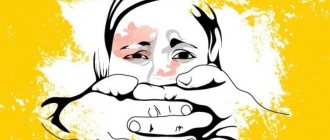What is identity: definition
This is self-identification, the ability of an individual to determine his membership in any group. Social identity is important for the development and formation of personality. Without self-determination, we cannot move forward, live among people, live in harmony with ourselves. Let's take a closer look at the concept and definition.
Identity
Concept of identity
What is this, according to Wikipedia? This property of the psyche is to express in a concise form for a person how he imagines his belonging to different groups and communities.
Identity in psychology is a person’s awareness of his belonging to some social position, role, or group of people. It helps the individual with the following:
- find a balance between personal and public;
- combine your experience and the experience of society;
- to protect one’s integrity and immutability, despite changes in the outside world.
Simply put, identity is a person’s attitude towards some group or some person. An individual perceives himself as the same as someone else. He expresses this not only at the internal level, but also at the level of appearance, behavior, etc.
Identity formation
According to Erikson's theory, formation is due to the resolution of age-related crises. Each successful resolution gives new ego-power to the subject. If the conflict is resolved unsuccessfully, then problems with self-determination arise. We usually call this “being confused about ourselves.”
Consider the crises that Erik Erikson spoke about:
- Up to 1 year. This is a crisis of trust and mistrust. The strength in a favorable resolution of a crisis is hope. The child is looking for an answer to the question “Can I trust the world?”
- From 1 to 3 years. Resistance to independence (autonomy) and feelings of shame. Strength with a favorable resolution is will. The child is looking for an answer to the question “Can I control my body and behavior?”
- From 4 to 6 years. Contradiction between initiative and guilt. Strength with a favorable resolution is determination. The child is looking for an answer to the question “Can I be independent from my parents, discover and develop my capabilities on my own?”
- From 7 to 12 years. Crisis of hard work and feelings of inferiority. Strength with a favorable resolution is self-confidence. The child is looking for an answer to the question “Am I capable of...?”
- From 13 to 19 years old. Ego identity crisis and role confusion. Strength with a favorable resolution is fidelity. A teenager (young man) is looking for an answer to the question “Who am I, what am I?”
- From 20 to 25 years. Crisis of intimacy and isolation. Strength with a favorable resolution is love (the ability to love). A young man is looking for an answer to the question “Can I build close relationships?”
- From 26 to 64 years old. Crisis of productivity and stagnation. Strength with a favorable resolution is caring. A person is looking for an answer to the question “What is the meaning of my life? What have I achieved and what else do I want to achieve?
- From 65 to death. Crisis of integrity and feelings of hopelessness (despair). Strength with a favorable resolution is wisdom. A person answers the question “Was there meaning in my life? Am I happy with her?
The resolution of the conflict depends on the development of the individual at the previous stage and on the general spiritual level of the society in which the subject lives.
Identity structure
E. Erickson identified four elements in the structure:
- Individuality. A person realizes that he and his experience are unique; he perceives himself as a separate, independent unit of society.
- Identity, integrity. A person feels meaningful and coherent in life. He sees and accepts the connection between the past, present, future, between what he was and what he wants to become.
- Synthesis. A feeling of inner harmony, unity and synthesis of images from childhood and the present.
- Social solidarity. A person shares the ideas of society and the individual group to which he belongs. He expects recognition, respect, and support from the reference group. He expects that its participants will appreciate his involvement.
Empathy
Over time, a person will move away from his parents and may adopt the behavior and character traits of literary heroes. Bravery in extreme situations, honesty, valor, etc. can be the merit of the books on which a child or teenager was raised. I have a separate article about what empathy is.
The impact of films is weaker, since the period of their influence on the human psyche is short-lived. Identifying with the hero of a work of art helps to better understand the work and evokes vivid emotions and experiences.
At a young age, many girls show a penchant for reading romantic literature. From books they learn more about how true ladies behave, as a result of which they themselves develop such traits as morality, delicacy, and femininity.
You can use the desire for identification for your own purposes. For example, during a divorce, it is recommended to read books about strong women, or heroic epics to develop self-confidence.
By the way, all this is written very interestingly in Yulia Fomina’s book “Psychological characteristics of fairy-tale characters and personal identification.” It tells exactly how fairy tales influence a child and what consequences they lead to in adulthood. Who knows, maybe in this work lies the answer to the question: “Why am I like this?”
Identity and Identification: What's the Difference?
In short and in simple words, identification is the process of a person identifying himself with a group, imitation of it, the desire to conform, and identity is the result of identification, a person’s idea of himself as a member of a group. Sometimes, even quite often, these concepts are used as synonyms. However, from a psychological point of view, this is wrong. As Erikson noted, identity (result) begins where identification (process) ends.
Symbolic interactionism
Adherents of this paradigm in sociology believe that a person reacts not to direct stimuli, but to their images. Language is considered the main symbolic system. “Understanding” by group members of each other without words is explained by the fact that the primary interaction is gesture and facial expressions.
Since a person cannot form and develop outside of society, he self-realizes in the process of interactions, “interactions.” Personality manifests itself only as a result of communications. The exchange of people’s ideas about themselves and others forms a “primary group” with the closest and most effective connections.
The personality is in constant dynamics: assessing the situation, its correlation with familiar symbols and in the interaction or exchange of symbols.
Types of Identity
Social identity is the ability of an individual to identify himself with a group. Groups are different: political, ethnic, gender, cultural, etc. Accordingly, a person’s social identity can be of different types. Let's look at this in more detail.
Gender identity
This should not be confused with gender and sexual identity. Gender is a system of characteristics of the image of a man (masculinity) and the image of a woman (femininity). These are society's expectations about how a person should behave, what character traits to have, how to look, etc. Most often, gender corresponds to gender, but this is not necessary. At the same time, gender has nothing to do with sexual orientation, although it is sometimes associated with it.
Gender self-determination implies the choice of a social role in society. As a rule, this is imposed in childhood. Therefore, boys choose the male gender, girls choose the female gender. However, in our world it is not so rare to find feminine men and masculine women, and the phenomenon of androgyny is also popular. But all this is a topic for another article.
Gender identity
Gender is a set of psychophysiological characteristics. People are born with gender. The first awareness of gender comes at about 2–3 years.
Sexual identity
In this case we are talking about sexual orientation. That is, a person considers himself heterosexual, homosexual or bisexual. The peak of formation of this identity occurs in adolescence and adolescence.
Ethnic identity
This is a person’s understanding of his roots and a sense of belonging to them, community with an ethnic group. Ethnic identity largely depends on the culture of society. Manifests itself at the cognitive, value and emotional level.
National identity
It is formed in the process of socialization of the individual. Depends on the society in which a person lives. It involves the acquisition of language, gestures, facial expressions, and behavior characteristic of the ethnic group in which the individual lives. Of course, along with this, a mentality characteristic of this people is developed. Due to the active mixing of nationalities, problems with ethnic self-determination are increasingly observed. This problem is increasingly attracting the attention of psychologists.
Professional identity
Choosing a profession or vocation is one of the most difficult parts of self-determination. Most people believe that professional self-determination occurs only in youth. In fact, this is a continuous, lifelong stage. Changing a job or profession, improving skills, taking retraining and advanced training courses, etc. – all this is included in the system of professional self-determination.
Cultural identity
This is belonging to the culture of a group. A person shares its values, norms, attributes. This is most clearly noticeable in the example of teenage subcultures. Emo, goths, rockers, vapers - you can’t list them all. In a broad sense, cultural identity is an individual’s identification of himself with the culture of the society in which he lives.
The issue of cultural identity is a very complex issue. Since the structure of cultural identity includes other types: ethnic, gender, sexual, religious. They are all interconnected and sometimes conflict with each other.
Civilizational identity
This is a person’s perception of himself as a subject of a particular civilization. That is, this is an attitude towards a specific state, society at a certain stage of its development.
Group and Ego Identity
They need to be considered together, because they are formed in parallel. From the first days of life, parents accustom the child to social interaction and encourage him to communicate with the group. The first group in a child's life is the family. Then friends appear. This is group identity: inclusion in the life of the group, acceptance of its worldview.
At the same time, ego identity develops. It presupposes a sense of stability, the immutability of a person’s essence. A lot can change around, the person himself grows, matures, but at the same time he remains with a sense of unity, continuity of his Self, acceptance of his appearance and inner world at any stage as unity. Ego-identity is the integrity of the individual in psychology (“in general, now I am the same as I was in childhood, several years ago”).
The formation of ego identity occurs throughout life. It goes through the crises that we already discussed at the beginning of the article. Each crisis has one task. It is put forward by society. That is why it is common to consider group and ego identity together.
The Great Ego
Attitudes towards personality in Soviet and Western schools of psychology were under pressure from ideology. In the USSR, psychology had to provide evidence of the correctness of the ideas of collectivism.
In Europe and America, psychologists were in demand as private and corporate consultants. Therefore, much more research has been devoted to personality and its self-identification.
Several main directions have emerged:
- Psychoanalysis.
- Behaviorism.
- Cognitivism.
- Symbolic interactionism.
The existence of different schools and competition between them reflects the complexity of the problem. A person turns to a psychotherapist and psychoanalyst when he realizes that something is “wrong” in his life. Loss of self-identity causes discomfort and stress.
Each person is individual. Differences in approaches to diagnosis and therapy allow everyone to find a specialist whose methods are most effective in a particular situation.
Loss of identity
“I’ve lost myself”, “I don’t know who I am”, “I’m confused in myself”, “I don’t know where I’m going, what I want” - these are the thoughts that come to a person who has lost his identity. A person loses faith in himself, understanding of his place in the world, the integrity of his Self. An exaggerated example of loss of identity is mentally ill people who consider themselves Napoleons, Jesus, etc. This example belongs to the pathological extreme; psychiatry deals with them. We'll talk about what psychologists work with.
Causes
Causes of loss of identity (personal crisis):
- drastic changes in society (for example, many people faced this problem when the USSR collapsed);
- serious and unfavorable changes in the life of the person himself (dismissal, bankruptcy, divorce, someone’s death);
- age crisis, for example, midlife crisis.
In general, the cause of loss of personal identity is stress. Moreover, this can be both an unpleasant experience and a very pleasant one. For example, a wedding, a long-awaited move to another country, or the birth of a child can also cause a loss of identity. This occurs due to any strong psychological shock.
Symptoms and signs
Symptoms of loss of identity:
- frequent doubts such as “Why don’t I leave this job?”, “What am I doing here?”, “Why am I living with this person?”;
- constant reflection on the meaning of life and purpose;
- feeling of uncertainty;
- frustration;
- chronic anxiety;
- inability to form a system of values and stable beliefs;
- doubts about the correctness of your actions;
- fear of the future;
- indecisiveness in actions.
For some people, the crisis is visible to the naked eye. They spend their time aimlessly, wander, they do not have a job or they change it often, or they are stuck in one position (usually a low one). Some people can't even get an education. Some people end up in bad company, some end up in prison. But most people just exist. They are unhappy, they do not understand what they want and what they can, where they need to move. In general, a person in such a state does not know who he is, and therefore cannot be himself and suffers greatly from this.
Danger of condition
How dangerous is this condition:
- exhaustion,
- maladjustment,
- desocialization,
- insulation,
- depression,
- neuroses,
- suicide,
- dependencies.
Some people try to console themselves with alcohol, drugs, or casual sex. Someone begins to grab onto everything in a row (any type of activity), but this only increases the feeling of emptiness and frustration. Others simply become depressed and lock themselves at home, waiting for death.
What to do
Remember where you last saw yourself. Try to remember a time when you felt good. What kind of person were you at that moment, where were you, who was nearby. Start with an analysis of childhood and gradually move towards the present. Remember what you could do, what you dreamed of, what you wanted. Why did they refuse this? Maybe it's time to return to this again? Think about what used to bring you joy, what was the meaning of life, an incentive. If you can't bring back exactly this, then think about something you can replace that is similar to this.
Thus, you need to find the reason (what brought you down) and work with this area. It is necessary to go through all stages of development again, starting from childhood. It's better to consult a specialist. In some cases, just one consultation is enough.
What types of similarity exist?
Psychologists have not yet come to a consensus on what the term “identify” includes; the meaning can be quite voluminous. Freud in his works pointed out that the identification of a person by external and internal signs occurs either by establishing the equivalence of taking into account signs (for example, identifying criminals), or by defining the essence, i.e. belonging to a certain group.
The psychologist also believed that identification is an unconscious action of merging an individual with other people in whole or in part, i.e. a kind of imitation. Such identification means infection with other people's thoughts and ideas, getting used to the emotions of the object of imitation.
We recommend: What is an alter ego?
Modern psychologists distinguish three types of identification. The first is the most common and means merging with external values. For example, you really like a famous figure skater, you watch all his performances, worry about every injury or fall on the ice. Any reward for your idol is your reward, his failure is your failure. You become so accustomed to the new image that you no longer feel the difference between yourself and this person.
Identification with internal values means that a person is completely immersed in the system of conventional coordinates “good - bad.” In other words, each of us has a true character and individual traits, which, under the influence of upbringing, are transformed into something different that meets the requirements of society.
A person puts on a mask facing others and considers this normal. But as soon as the mask encounters the inner “I,” the true values are replaced by the conditional values of the mask.
Identification with one’s own personality is the third level. For example, some people quite often have vivid, eventful dreams; they completely sincerely empathize with themselves, take everything that happens at face value, and completely merge with the character of the dreams.
However, upon awakening, they realize that it was just a dream, the reality around them is a completely different matter. This level of identification is the deepest; it consists of identifying oneself with the body, personality, feelings, secret desires, aspirations, without masks and roles imposed from outside.
Definition of the concept
Self-identification is the basis of one’s “I”, an assessment of one’s own abilities, personality traits, personal, physical and moral characteristics. Each person determines for himself how capable he is of performing a particular activity, achieving goals, displaying feelings or physical qualities. Based on this data, a person can classify himself as a member of one or another group: religious, sports, intellectual and others. For example, a person who is aware of his ability to draw may classify himself as an artist, and someone who sees himself as having excellent physical abilities identifies himself as an athlete. The only way for a person to self-identify is reflection: only by deeply reflecting on himself can a person understand who he is, what he wants and where he is going.
Methods
Experimental methods of research in most cases focus on specific aspects - social roles, gender or group affiliation, personality characteristics. Such studies make it possible to identify the peculiarities of living certain identities and searching for a significant object for identification in different situations and areas of activity.
Difficulties arise when it is necessary to study not specific characteristics, but to form a holistic picture of the personality and its identity.
In order to explore the widest possible range of manifestations of identity, to understand with whom, with what and to what extent a person identifies himself, several diagnostic directions are used:
- Questionnaires to identify the level of attitude towards oneself and self-satisfaction. They are easy to use, easy to standardize and validate on a representative sample. Limitations to obtaining objective survey results may include cognitive biases related to self-perception, as well as socially desirable responses.
- Psychosemantic research methods - in them, the assessment of one’s own personality is considered through compliance with a certain set of criteria, which are not always socially approved.
- Projective techniques - they provide an opportunity to explore identity and self-awareness.
Examples
Personal self-identification, including in the Western tradition, includes a person’s self-determination to one group or another, an assessment of one’s own capabilities and an analysis of the life path traveled. At the same time, a person can belong to several groups at the same time according to different criteria. For example:
- by profession and social status: doctor;
- by marital status: spouse, mother, daughter;
- by nationality and area of residence: Russian, Muscovite;
- in terms of values and ideology: Orthodox, committed to the peaceful resolution of conflicts, considers her family to be her main life value;
- Hobby: needlewoman;
- according to musical preferences: loves bard songs and Russian rock.
Pain points of personal identity
What are the painful points of a person’s self-identification? These are those characteristics of an individual that a person knows about, but considers them negative traits. For example, at the socio-professional level of self-identification, this may be the lack of a specific skill necessary in professional activity, and at the level of values and ideology - excessive love for animals combined with relative indifference to people’s troubles. When communicating with other people, a person experiences psychological discomfort if he has to talk about “painful” topics relating to his personality.
Stages
Stages of identification from forensic science:
- Preparation. Experts must study the available data about a specific person, evaluate the information, and weed out useless and false information. If there is enough information, a research plan is drawn up and technical means are prepared.
- Analytics. The specialist begins to study the properties, signs of objects and subjects that are involved in the case.
- Experiment. It is needed to obtain samples of the subjects being studied.
- Comparison. Stage of object identification.
The last stage is summarizing the information received, analyzing it, drawing conclusions, and recording the results. The results of the examination are recorded in special acts.











